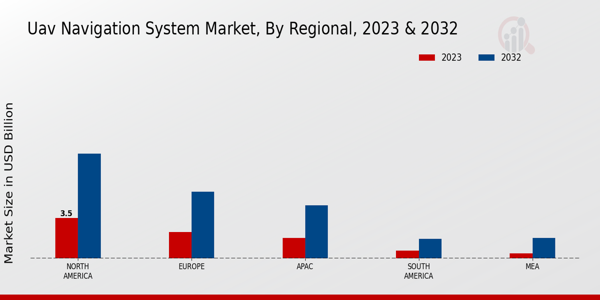The UAV Navigation System Market has seen significant growth in recent years, driven by the increasing demand for advanced technology in various sectors such as defense, agriculture, and transportation. This market is characterized by rapid advancements in technology, changes in regulatory frameworks, and a rising number of applications for unmanned aerial vehicles.
Competitive insights indicate a diverse landscape where established players and emerging startups are vying for market share. Companies are focusing on strategic partnerships, mergers and acquisitions, and continuous innovation in products and services to gain a competitive edge.
This dynamic environment is attracting investments that aim to enhance technological capabilities and expand service portfolios, reflecting a trend toward improved operational efficiency. Trimble has established a strong presence in the UAV Navigation System Market, recognized for its expertise in precision navigation and positioning technology.
The company's strengths lie in its commitment to innovation and the development of user-friendly navigation solutions that cater to various airborne platforms. Trimble is known for integrating state-of-the-art GPS technology into its UAV systems, which enhances accuracy and reliability for end-users.
Moreover, the company has diversified its offerings to include software solutions that complement its hardware, allowing it to optimize workflows across sectors such as construction, agriculture, and surveying.
The robust support and training programs provided by Trimble further amplify its reputation as a trusted partner in the UAV navigation segment, enabling operators to maximize the efficiency of their UAV applications.
AeroVironment has emerged as a key player in the UAV Navigation System Market, demonstrating significant expertise in the development of unmanned aerial systems tailored for military and commercial applications.
The company's navigation systems are designed with cutting-edge technology to ensure high performance in various operational environments. AeroVironment distinguishes itself through its extensive investment in research and development, which fosters innovation and enables the company to maintain a competitive advantage through unique product offerings.
The focus on providing integrated solutions that enhance situational awareness and mission effectiveness resonates well with defense contractors and commercial clients alike.
With an impressive portfolio of UAVs that employ advanced navigation systems, AeroVironment has positioned itself as a leader in delivering high-precision and reliable systems, thereby playing a crucial role in shaping the future of UAV navigation technology.















Leave a Comment